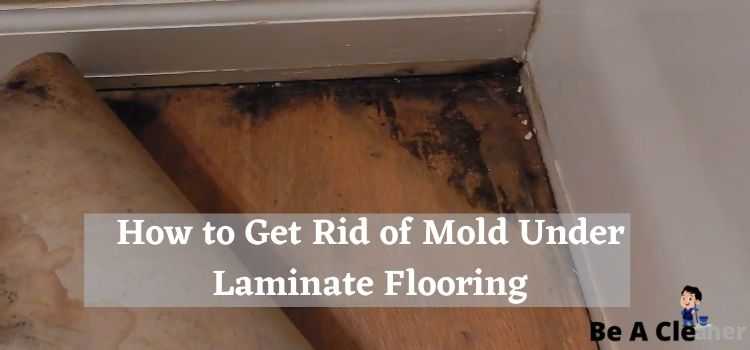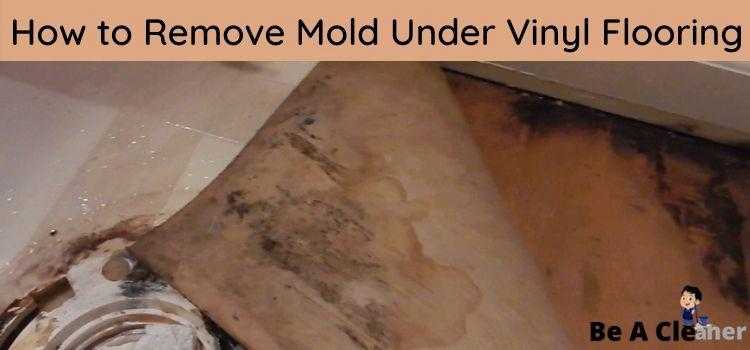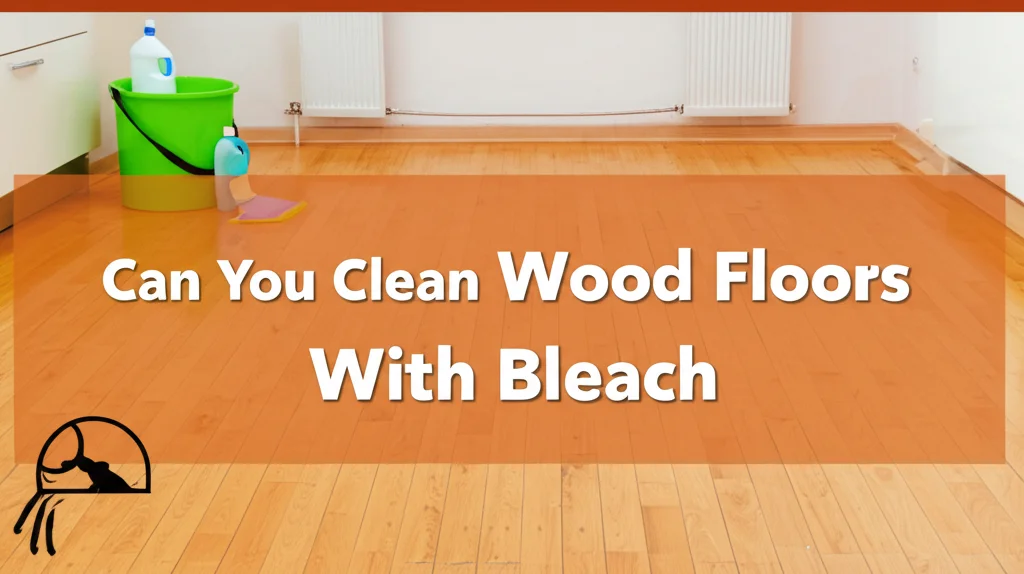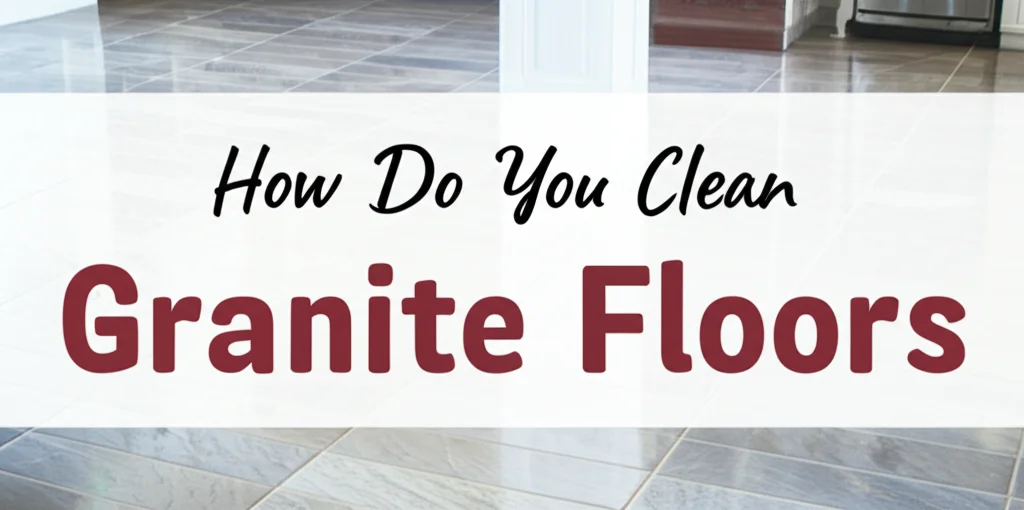· Floor Cleaning · 5 min read
How to Get Rid of Mold Under Laminate Flooring

Mold under laminate flooring is frightening and hazardous for homeowners. The side effects of growing mold and mildew under or on the laminate floor are dangerous.
It doesn’t only damage the sub-floor but is also unfriendly to your health. In the worst case, you need to replace the entire flooring, which costs you many bucks.
So, what’s the remedy to fight against the mold under the laminate surface? In other words, how to get rid of mold under laminate flooring?
In Today’s guide, we will walk you through some fast and effective ways to remove the mold beneath the laminate base. Without further ado, start scrolling down.
Top 5 Effective Ways to Get Rid of Mold Under Laminate Flooring
Follow the below cleansing techniques to remove the mold growth under laminate flooring.
01. Mixer of Water & Detergent
Water solution with detergent is sufficient to tackle and remove mold under the laminated floor. However, it requires a bit of elbow grease to eliminate mold beneath the surface.
You need to pull up the laminated floor with the affected slabs. Then, you will be ready to apply the solution of water and detergent.
Equipment You Need:
- Gloves
- Goggles
- Detergent
- Water
- A scrubbing brush
How to Apply:
First off, make sure you pull up the laminated flooring. When you remove the laminate floor, wear safety gloves and goggles to protect yourself from potential hazards.
Once you remove the flooring, vacuum the spot to remove dirt & dust. Now, it’s time to apply the solution of detergent & water. Pour a gallon of water into a bucket and mix a cup of detergent.
Secondly, use your scrubbing brush to scrub the mold areas with the solution you made. Finally, remove the water and residue evenly, and repair the leak if there is any.
02. Use the solution of Rubbing Alcohol & White Vinegar
Rubbing alcohol and vinegar contains antimicrobial properties to kill mold. To make a solution, blend an equal part of water, vinegar, and rubbing alcohol.
Equipment You Need:
- Rubbing alcohol
- White Vinegar
- Water
- A mop
How to use:
Start the cleaning workflow by wiping the surface to suck away dirt & debris from your laminate floor.
Use a soft-bristle brush to sweep the base to prevent it from scratching.
Dip your mop in the solution and start scrubbing the mold area until the dark spot disappears.
If the stain is hard to remove, dampen a soft cloth into the mixture and wipe the laminate surface with the hand.
Finally, air-dry the laminate surface.
03. Keep Your Laminate Floor Dry & Clean
Mold grows crazy if there is moisture. A dirty floor and wet environment are ideal for mold to spread.
So, it will be best if you suck away every spec of dirt and ensure your interior is well-ventilated.
04. Stop the Spread of Mold
Mold spreads from one block to another. It would be best if you seal the affected floorings of a room. As a result, mold can’t develop from the affected to the cleaned space.
Regarding this, seal every exit way like the door by hanging plastics to stop the spreading of mold. We suggest you keep the window open for ventilation.
Running a fan will be another effective way to keep the room moisture-free.
05. Vacuum Your Laminate Floor
The last but effective method to control the spreading of mold is to vacuum the area once you treat the affected space.
Vacuuming the surface will eradicate the inactive spore. In this case, it would be best if you use a HEPA filter to suck away the spore efficiently.
Besides, you can also keep the area you treated with solution dry by vacuuming. If there is still moisture or wet situation on the treated space, mold will return.
At the last stage, we recommend you use a dehumidifier to dry the last drop of moisture.
Signs of Mold Under Hardwood Floors
If water seeps under your laminate floor, there will create a wet situation. And you know that mold loves a damp environment.
In this case, you must take immediate action and need to remove the water under the laminate base. Otherwise, mold will welcome & damage the hardwood surface.
But the heck is- you can’t see moisture. The problem is- you never mop the area if water stands between laminate planks and sub-flooring.
However, the following signs will let you detect whether mold is under the base or not.
- Musty odor
- Water damage
- Discoloration
- Visible mold
- Cracking
- Water leaking
Know More on Be A Cleaner
How to Dry Laminate Flooring with Water Under It
How to Remove Mold from Silicone Rubber
How to Clean Shower Tiles Without Scrubbing
Frequently Asked Questions
Is Vinegar or Bleach Better for Killing Mold?
Vinegar is more effective compared to bleach to kill mold. Bleach can only remove the mold from the surface only and fail to eliminate it under the laminae surface. That’s why experts recommend using vinegar to handle mold growth.
Can I Remove Black Mold Myself?
Yes, you can remove black mold yourself by applying the solution of bleach and water.
Just mix a cup of bleach with a gallon of water into a bucket. Then, use it in the mold-affected area. Finally, scrub the place to get rid of black mold.
How Long Before Mold Becomes Dangerous?
Mold will start spreading around and under your floor 24-48 hours when it is exposed to water.
If you don’t take any action to stop its growth, it will be dangerous for your health then.
How to Identify Black Mold Under Flooring?
The best way to detect the black mold under the flooring is to pull out the floor. After pulling out the surface, check for the mold. If it appears black and powdery, understand it is black mold.
How Do You Get Rid of Mold without Scrubbing?
Use distilled white vinegar and spray it on the affected area. Leave it for at least an hour to sit it without scrubbing. Then, sweep the area and rinse with clean water.
Conclusion
From top to bottom, we discussed how to get rid of mold under the laminate floor. Each of the cleaning methods we mentioned is effective and helps to kill the mold.
What you need to do is- try out the cleansing techniques we referred to check which works best. Then, let us know by leaving a comment below.




